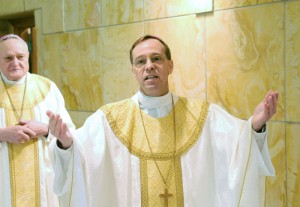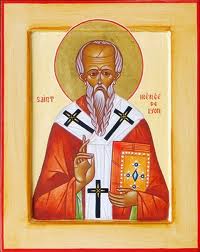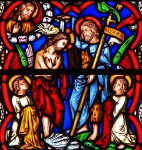 The Catechism of the Catholic Church is often touted as an excellent resource for Scripture study because of the extensive biblical references. I find that the Catechism is also good for word studies as well.
The Catechism of the Catholic Church is often touted as an excellent resource for Scripture study because of the extensive biblical references. I find that the Catechism is also good for word studies as well.
For example, the index at the back under “vocation” has well over 30 listings, so that this rich concept may be examined from many perspectives. Another helpful tool is the glossary, which provides a concise definition along with the best Catechism references for additional study. Take, for example, the following glossary entry for “vocation” (the numbers in parentheses refer to paragraphs in the Catechism):
“The calling or destiny we have in this life and hereafter. God has created the human person to love and serve him; the fulfillment of this vocation is eternal happiness (1, 358, 1700). Christ calls the faithful to the perfection of holiness (825). The vocation of the laity consists in seeking the Kingdom of God by engaging in temporal affairs and directing them according to God’s will (898). Priestly and religious vocations are dedicated to the service of the Church as the universal sacrament of salvation (cf. 873; 931).”
Those wanting to learn more about vocations to the consecrated life are then quickly referred to Catechism, no. 931, which provides as follows, quoting canon 783 of the Code of Canon Law:
“Already dedicated to him through Baptism, the person who surrenders himself to the God he loves above all else thereby consecrates himself more intimately to God’s service and to the good of the Church. By this state of life consecrated to God, the Church manifests Christ and shows us how the Holy Spirit acts so wonderfully in her. And so the first mission of those who profess the evangelical counsels is to live out their consecration. Moreover, ‘since members of institutes of consecrated life dedicate themselves through their consecration to the service of the Church they are obliged in a special manner to engage in missionary work, in accord with the character of the institute.'”
There are many ways to study the Catechism, but be sure to take advantage of the references, indices, and glossary!


 Earlier this month, fittingly on June 9th, the feast of the holy deacon
Earlier this month, fittingly on June 9th, the feast of the holy deacon  Last week Rorate Caeli published
Last week Rorate Caeli published  The following is taken from the
The following is taken from the  Nearly two months ago, we reported on the
Nearly two months ago, we reported on the  Today is the tenth birthday of my son
Today is the tenth birthday of my son